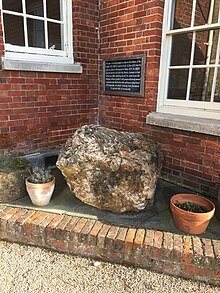
The Commander-in-Chief Fleet (CINCFLEET) was the admiral responsible for the operations of the ships, submarines and aircraft of the British Royal Navy from 1971 until April 2012. The post was subordinate to the First Sea Lord, the professional head of the Naval Service. In its last years, as the Navy shrank, more administrative responsibilities were added.

Scipion was a 74-gun French ship of the line, built at Lorient to a design by Jacques Noel Sane. She was laid down as Orient in late 1798, and renamed Scipion in 1801. She was first commissioned in 1802 and joined the French Mediterranean fleet based at Toulon, in the squadron of Admiral Leissègues. Consequently, she was one of the ships afloat in that port when war with England reopened in May 1803. She participated in the Battle of Cape Finisterre and the Battle of Trafalgar. The British captured her in the subsequent Battle of Cape Ortegal. In 1810 she participated in the Java campaign, which in 1847 earned her surviving crew the Naval General Service Medal. She participated in the blockade of Toulon in 1813 and was paid off in 1814. She was broken up in 1819.
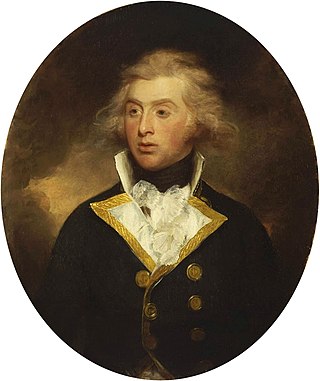
Admiral Sir Robert Stopford, was a distinguished officer in the Royal Navy whose career spanned over 60 years, from the French Revolutionary Wars to the Syrian War.

HMS Gorgon was a wooden steam paddle sloop of 6 guns, launched in 1837. In 1840 she took part in the bombardment of Acre, and in 1843 was part of the Royal Navy squadron stationed in the River Plate during the Uruguayan Civil War. She was converted to a troopship and in 1858 assisted Agamemnon in the laying of the first transatlantic telegraph cable. She was sold for breaking in 1864.

HMS Hannibal was a 74-gun third-rate ship of the line of the Royal Navy, launched on 15 April 1786, named after the Carthaginian general Hannibal. She is best known for having taken part in the Algeciras Campaign, and for having run aground during the First Battle of Algeciras on 5 July 1801, which resulted in her capture. She then served in the French Navy until she was broken up in 1824.

HMS Hydra was the lead ship of her class of wooden steam paddle sloops of the British Royal Navy, launched in 1838 at Chatham Dockyard. After taking part in operations during the Syrian War in 1840, she then served on anti-slavery operations and also as a survey vessel. She was scrapped in 1870.

HMS Benbow was a 74-gun third rate ship of the line of the Royal Navy, built by Brent of Rotherhithe and launched on 3 February 1813.

HMS Cambridge was an 80-gun third rate ship of the line of the Royal Navy, launched on 23 June 1815 at Deptford Dockyard. She was built to the lines of the Danish ship Christian VII, which had been captured in 1807 at the Second Battle of Copenhagen.
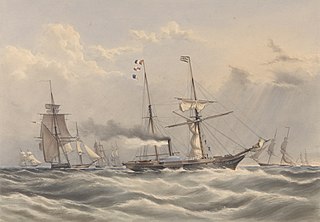
The Experimental Squadrons also known as Evolutionary Squadrons of the Royal Navy were groups of ships sent out in the 1830s and 1840s to test new techniques of ship design, armament, building and propulsion against old ones. They came about as a result of conflict between the "empirical" school of shipbuilding, the "scientific" school led by the first School of Naval Architecture, and the "traditional" school led by master shipwrights from the royal dockyards.
Admiral of the Fleet Sir Thomas Matthew Charles Symonds, GCB was a Royal Navy officer. He was commanding officer of HMS Arethusa which participated in the bombardment of Sevastopol during the Crimean War.
HMS Castor, launched and commissioned in 1832, was a 36-gun fifth rate frigate of the Royal Navy and the third naval ship to bear the name.

HMS Actaeon was a 26-gun sixth-rate frigate of the Royal Navy.
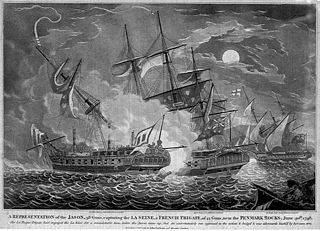
Seine was a 38-gun French Seine-class frigate that the Royal Navy captured in 1798 and commissioned as the fifth-rate HMS Seine. On 20 August 1800, Seine captured the French ship Vengeance in a single ship action that would win for her crew the Naval General Service Medal. Seine's career ended in 1803 when she hit a sandbank near the Texel.

HMS Iris was a 26-gun sixth-rate frigate launched on 14 July 1840 from Devonport Dockyard. She spent some time with the West Africa Squadron suppressing the slave trade and later with the East Indies Station was involved in operations in Borneo. Iris was the first flagship of the Australia Station between 1859 and 1861 during which time she participated in the First Taranaki War. In 1864 she was extensively modified to allow her to ferry transatlantic telegraph cable to the cable-laying ship Great Eastern. She was decommissioned and sold off in 1869.

HMS Andromeda was a 32-gun Hermione-class fifth rate frigate of the Royal Navy. She was laid down in 1781 and launched in 1784. She was commissioned for the first time in 1788 when Captain Prince William Henry took command of her and sailed for the West Indies. Prince William Henry paid her off in 1789 and she was not commissioned again until 1790 in response to the Spanish Armament. In 1792 Andromeda joined the Royal Navy's Evolution Squadron in the English Channel before sailing for the Leeward Islands where she stayed until the end of 1793 when Captain Lord Northesk brought her home. She was refitted for much of 1794 before in September joining the Downs Station. Captain William Taylor assumed command in 1795, briefly sailing her to Newfoundland before returning to the North Sea Fleet in 1796. She stayed here for 3 years, seizing the 36-gun Batavian frigate Zefir in the Firth of Forth in March 1798 and participating in the Raid on Dunkirk in July 1800. After another period of service in the Leeward Islands Andromeda returned home at the Peace of Amiens and was laid up at Portsmouth Dockyard where she was broken up in September 1811.

HMS Encounter was ordered as a First-Class Sloop with screw propulsion on 5 February 1845 to be built at Pembroke, in accordance with the design developed by John Fincham, Master Shipwright at Portsmouth. Her armament was to consist of 8 guns. She was to have a more powerful steam engine rated at 360 nominal horsepower. In 1848 she would be altered abaft and lengthened at Deptford prior to completion. A second vessel (Harrier) was ordered on 26 March 1846 but after her keel was laid at Pembroke Dockyard, her construction was suspended on 9 September 1846 then cancelled five years later, on 4 April 1851. Encounter had her armament radically altered in 1850 and she was broken up at Devonport in 1866.

The action of 30 June 1798 was a minor naval engagement fought along the Biscay coast of France during the French Revolutionary Wars. The French Navy had been largely driven from the Atlantic Ocean early in the war following heavy losses in a series of failed operations. This had allowed the Royal Navy's Channel Fleet to institute a close blockade on the French naval ports of the Biscay coast, particularly Brest in Brittany. The blockade strategy included a constantly patrolling inshore squadron composed of frigates, tasked with preventing the passage of French ships into or out of the port. In the spring of 1798, several French frigates stationed in the Indian Ocean were sent back to France as the base at Île de France could no longer supply them effectively. One of these ships was the 40-gun frigate Seine, which departed Port Louis laden with 280 soldiers from the garrison.
In 1989 the Royal Navy was under the direction of the Navy Department in the UK Ministry of Defence. It had two main commands, CINCFLEET and Naval Home Command.

Admiral Anthony Maitland, 10th Earl of Lauderdale was a British naval officer who served during the French Revolutionary War, Napoleonic Wars and War of 1812. He also participated in the Bombardment of Algiers. He served as Member of Parliament for Haddington Burghs between 1813 and 1818 and Berwickshire between 1826 and 1832. From 1830 until he was promoted to rear-admiral in 1841 he was a naval aide-de-camp to at first King William IV and then Queen Victoria.
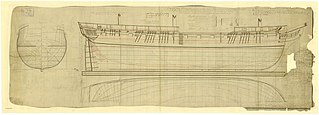
HMS Pallas was a 36-gun fifth-rate Apollo-class frigate of the Royal Navy. Placed in ordinary when completed in 1816, Pallas was commissioned for the first time in 1828. Under Captain Adolphus FitzClarence the frigate spent time blockading the Azores before making trips to India and then Nova Scotia, conveying important passengers. The ship sailed to the Mediterranean in 1830 under the command of Captain Manley Hall Dixon, and returned early the following year with the survivors of the wreck of the Countess of Harcourt. Later in the year Pallas joined the West Indies Station, where she served until 1834 when she was paid off. In 1836 the frigate was converted into a coal hulk, in which role she served at Plymouth Dockyard until being sold in 1862.


